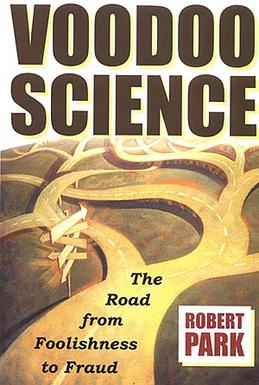
Voodoo Science is written by Robert Park who is a Physics professor and former chairman of the Department of Physics. The book explores claims that have been made over the years and examples of Pseudoscience and then shows the true facts behind the situation. He effectively disapproves many different claims and theories that have roots in science, but are fraudulent or incorrect. After he has shown the scientific facts and sometimes even common sense to the reader, he goes on to explain the psychology of the situation and why people are swayed to believe things that are untrue. Many inventors try to trick and lie their way into getting people to invest and buy their product. The book is well written and easy to read for the average reader making it a enjoyable book to read casually while still getting the necessary information. Considering the fact that it was written by a Physics professor as well is also something to keep in mind as the author is not just a writer researching the topic.
This book tells many stories of these people and other examples like the international space station where people were taught to look above and to strive for the stars. The chapter on the international space station was probably my favorite just for the simple fact that I had never thought of it as an example. When we think of Pseudoscience we think of scheming con men, false beliefs, or unfounded “facts”, however, it seems that the entire country was a victim of Pseudoscience when we were first looking to build the International Space Station and competing with the USSR for dominion of space. I especially found the part about the commercial on television around that time that spoke about “shouldn’t we be there too” when speaking of the USSR’s Mir Space Station interesting and slightly comical. I would say this example would fit most into Chapter 10 about mass delusions because the country was deceived about the importance of getting into space. The Space Station was supposed to create new alloys, collect new scientific data, and take high resolution photographs outside of the Earth’s atmosphere, but no scientific breakthroughs have been made. The people’s fantasies and dreams were played on as we looked to “reach for the stars” and “visit unknown shores like Columbus” where there was very little plausibility involved. The main things I learned from this book that Pseudoscience is found in other places than just the backyard inventors and normal things that seem like schemes that are sometimes found on the internet promising unbelievable results. The glory of the International Space Station was a product of the United States Government and other examples found in the book that were actually featured on news broadcasts are examples of Pseudoscience that may not be expected from such mainstream and "reliable sources". The book taught me that I need to not be so quick to believe and that I need to question the source and results first.




No comments:
Post a Comment